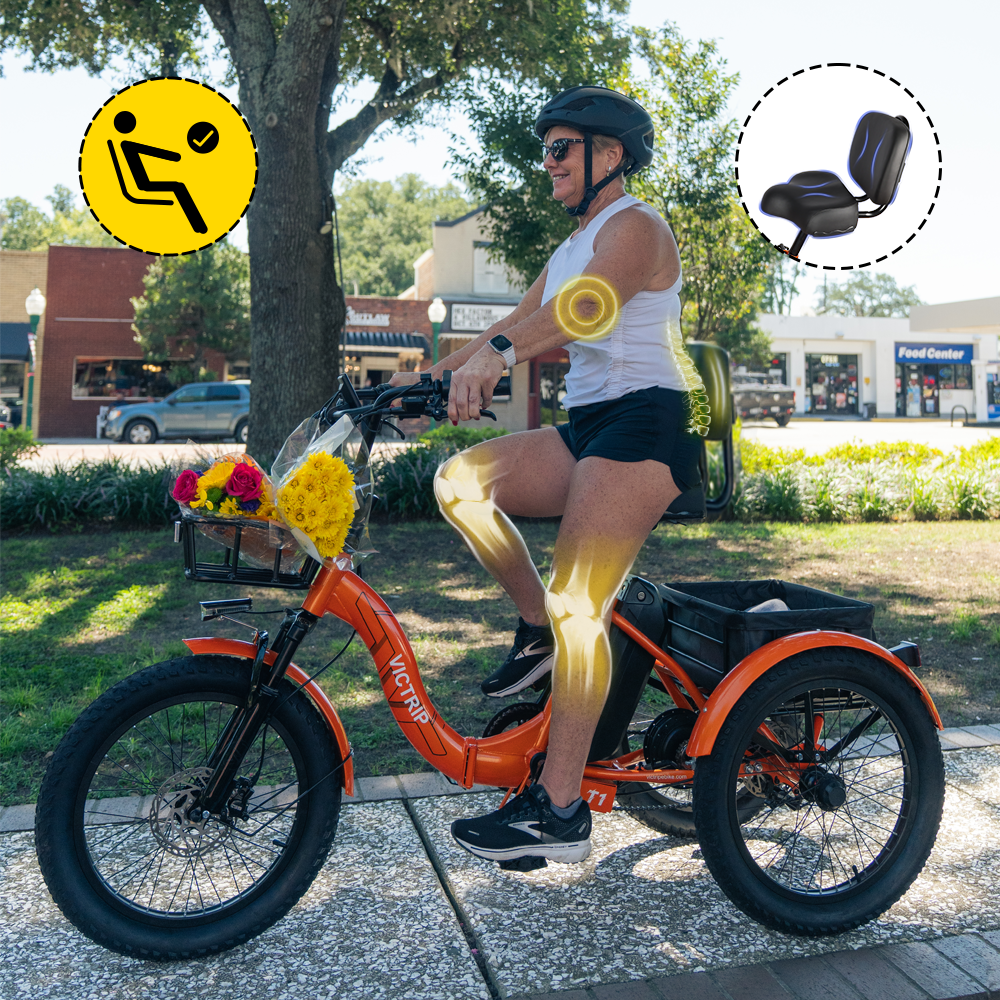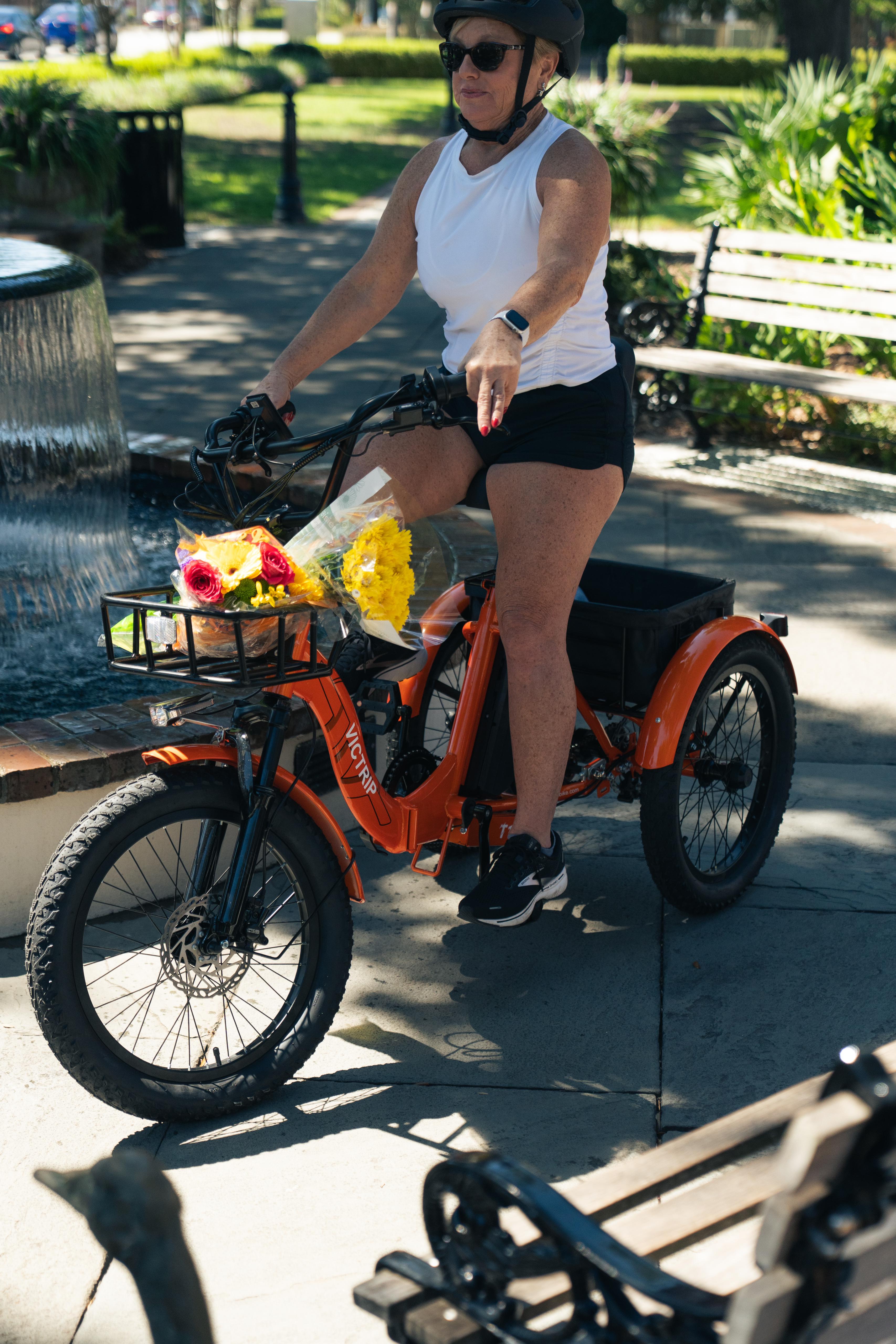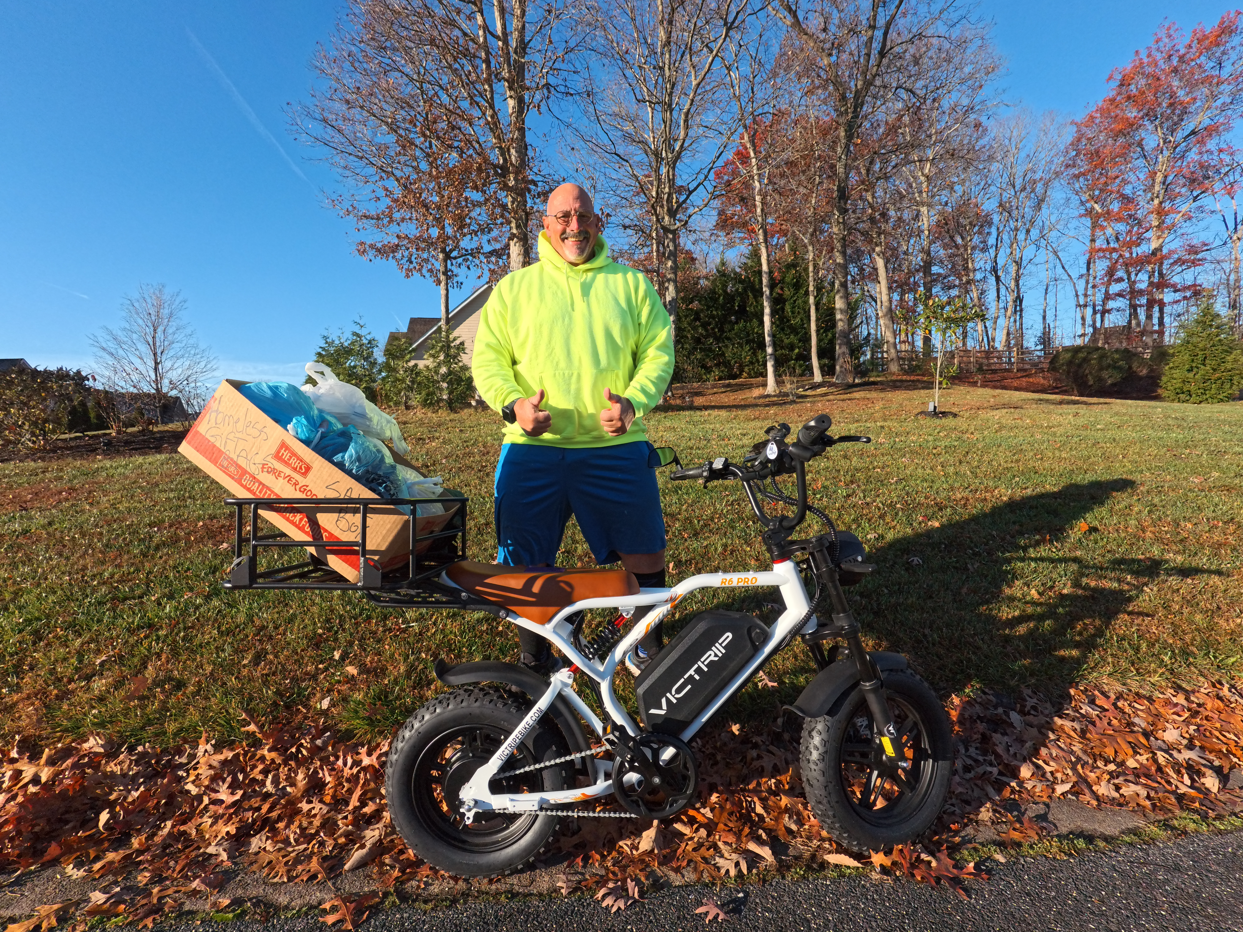
When you hop on your ride, you deserve confidence that your bike will stop when you want it to. This guide gives you everything — plain and practical — about eBike brake pads, so you can choose, maintain, and replace them like a pro. We'll cover types, inspection, long-term care, hands-on replacement steps, troubleshooting, and buying tips. Whether you commute, tour, or haul heavy cargo, understanding eBike brake pads is the fastest way to safer, smoother stops.
Why eBike Brake Pads Matter
EBikes are heavier and often faster than regular bikes, so their braking needs are steeper. That’s why eBike brake pads are more than a consumable — they're a safety system. Pads translate friction material into stopping power; they control heat, modulation, and fade. If your eBike brake pads are wrong for your use (or worn out), you’ll feel it: longer stopping distances, noisy brakes, and uneven wear on rotors.
From an E-E-A-T standpoint, think of this guide as expert-backed and experience-driven: the primers, step-by-step checks, and recommended practices reflect mechanic best-practices and manufacturer guidance. Keep in mind: good habits and timely pad replacement cut repair costs and prevent dangerous failures.
Types of eBike Brake Pads
There are four common classes of eBike brake pads used across disc systems (the majority on modern e-bikes): organic (resin), sintered (metallic), semi-metallic, and ceramic/compound blends.
Organic (Resin) Pads
Organic pads are made from compressed fibers and binding resins. They offer quiet operation, strong initial bite, and are gentle on rotors. For urban commuters on lighter e-bikes, organic eBike brake pads provide predictable stopping at lower temperatures. They wear faster in heavy-braking or wet conditions.
Sintered (Metallic) Pads
Sintered pads are metal powders fused under heat and pressure. They're durable, heat-resistant, and better for heavy loads—cargo e-bikes, mountain e-bikes, and steep descents. Sintered eBike brake pads bite well under high heat but can be noisier and increase rotor wear.

Semi-metallic & Ceramic Blends
Semi-metallic pads contain a mix of metal and organic materials, striking a balance between performance and rotor friendliness. Ceramic or specialty compound pads are engineered for low noise, stable performance, and controlled wear—often a premium option for riders seeking a quieter ride with solid bite.
How Each Type Works (brief)
Materials determine friction coefficient, thermal capacity, wear rate, and noise. Pick the pad that matches your e-bike's weight and your riding style: light commuters for organic pads, heavy loads and aggressive riders for sintered pads, and mixed-use riders for semi-metallics.
Pros & Cons Table
| Pad Type | Pros | Cons | Best for |
|---|---|---|---|
| Organic (Resin) | Quiet, good initial bite | Wear faster, heat-limited | Light commuters, city riders |
| Sintered (Metallic) | Durable, heat-resistant | Noisy, rotor wear | Cargo, mountain, heavy riders |
| Semi-metallic | Balance of both | Middle-ground cost | Mixed-use riders |
| Ceramic / Specialty | Quiet, stable | Expensive | Performance commuters, noise-sensitive riders |
How to Inspect Your eBike Brake Pads
Routine inspection keeps eBike brake pads from turning into a safety problem. Inspect every 500–1,000 miles or monthly if you ride daily.
Visual checks
-
Remove wheel / check through caliper window.
-
Look for thickness: most pads start around 3–5 mm. Replace when friction material is ≤1 mm (or manufacturer minimum).
-
Check for embedded grit, glazing (shiny surface), or uneven wear.
-
Smell test: burnt smell indicates overheating.
Functional checks
-
Listen for squeal, grinding, or chatter.
-
Check braking modulation (feel). If brakes feel weak or grabby, pad condition or rotor true may be problem.
-
Measure rotor thickness; excessive rotor wear may mean pads contaminated with metal.
Quick note: If a pad’s backing plate is showing or you can see rivets, replace pads immediately — that’s a catastrophe waiting to happen.
Maintenance to Extend Pad Life
You’ll get far more life from your eBike brake pads if you keep things clean and aligned.
Cleaning & care
-
Keep rotors clean — wipe with isopropyl alcohol before bedding new pads.
-
Remove embedded grit with a plastic pick; don’t scrape with metal.
-
Store your bike in a dry spot; salt and moisture accelerate wear.
Bedding-in new pads
Bedding is essential. Ride at moderate speed, apply repeated progressive stops from 10–15 mph to warm pads and rotor — this layers a proper friction surface. For eBike brake pads, don’t dump the brakes during bedding; progressive heat cycles matter.
Habits that help
-
Coast into stops rather than sudden slam-braking whenever safe.
-
Use both brakes together; rear-only braking overloads the rear pad.
-
For long descents, use intermittent braking to avoid overheating.
Replacing eBike Brake Pads — Step-by-step
Most modern e-bikes use hydraulic disc brakes. Replacing eBike brake pads in hydraulic calipers is similar across brands. Below is a generalized process. If you’ve got mechanical disc brakes, the steps are similar minus the hydraulic bleed.
What you’ll need
-
New replacement pads (compatible with caliper)
-
Hex keys/Allen set
-
Needle-nose pliers
-
Flat screwdriver (plastic preferable)
-
Clean rag and isopropyl alcohol
-
Pad spacer or plastic tire lever
-
Safety gloves and eye protection
Step 1: Remove the wheel
Shift to a gear that makes it easy, open quick-release or thru-axle, and remove the wheel to access pads and rotor.
Step 2: Remove the retaining pin/clip
Most pads are held by a pin or spring clip. Remove that with pliers or a suitable tool. Keep small parts.
Step 3: Take out old pads
Pull pads out. Inspect rotor and caliper interior for grit. If you see metal shards or excessive deposits, clean carefully.
Step 4: Compress pistons
Use a pad spacer or plastic tool to push pistons back into caliper. This makes room for new pads. Don’t use metal force.
Step 5: Install new pads
Place new eBike brake pads in the correct orientation (friction surface facing rotor), reinsert pin/clip, and secure.
Step 6: Reinstall wheel and align
Put wheel back in, ensure rotor sits between pads without rubbing. Spin wheel — if it rubs, check caliper alignment.
Step 7: Bed the pads
As above: gentle progressive braking cycles to seat material.
When to bleed: If hydraulic lever feels spongy after pad replacement, bleed system per manufacturer instructions.
Rotor & Caliper Checks — When to Replace Rotor vs Pads
Rotors have limits: thickness and trueness. If rotor thickness is below the stamped minimum, replace rotor. If rotors are heavily scored or warped, changing pads won’t fix noise or pulsing. Heavy braking with metallic pads can accelerate rotor wear.
Troubleshooting Common Brake Problems
Problem: Squealing / High-pitched noise
-
Likely glazing or contamination. Clean rotor and pads; lightly sand pad surface or replace if glazed.
-
Check pad bed-in and alignment.
Problem: Grabby or sticky brakes
-
Rotor contamination (oil) or uneven pads. Clean with alcohol; replace pads if contaminated by oil (oil is tough to remove).
Problem: Low stopping power
-
Worn pads, air in hydraulic line, or glazed pads. Inspect pads first.
Problem: Brake fade on long descents
-
Using wrong pad compound for heavy-duty use. Upgrade to sintered pads for better heat tolerance.
Choosing the Right eBike Brake Pads for Your Ride
Choosing the correct eBike brake pads depends on weight, riding style, environment, and rotor compatibility.
-
For city commuters on light e-bikes: organic/resin pads.
-
For cargo or heavy riders: sintered/metallic pads.
-
For mixed-use with occasional aggressive riding: semi-metallic.
-
If noise is a concern and you ride moderate loads: ceramic or premium resin blends could be best.
Compatibility Checklist
-
Match pad shape to caliper model (Shimano codes, etc.).
-
Confirm rotor size and thickness.
-
If uncertain, consult manufacturer or reputable bike shop.
Upgrades & Performance Pads
If you ride fast, carry loads, or race, consider performance pads specifically designed for high temps. Brands often list applications: downhill, e-mtb, touring, cargo. Performance eBike brake pads typically cost more but reduce fade and give longer consistent performance.
Sustainability & Recycling of Pads
Brake pads contain metals and binders. Don’t toss them in household trash if local waste rules restrict disposal. Recycle metal backing plates where possible. Check local recycling centers for mixed-material rules.
Cost, Brands, and Where to Buy
Price ranges vary: basic pads can be $10–$20/set, premium compounds $25–$60/set. Trusted brands include Shimano, SRAM, TRP, EBC, and Galfer. For guidance and rotor servicing tips, check resources like Park Tool’s brake guide for mechanics-level advice.
Conclusion & Final Safety Checklist
eBike brake pads are a small component with huge impact. Keep these final checkpoints in mind:
-
Inspect pads regularly (visual + feel).
-
Match pad type to your ride: organic for quiet city use, sintered for heavy loads.
-
Bed new pads properly and avoid contamination.
-
Replace pads when ≤1 mm friction material remains.
-
If in doubt about hydraulics or rotor limits, consult a professional.
Follow these steps and your stops will be safer, quieter, and more predictable. Take care — braking well keeps the fun going.
H2 FAQs
How often should I replace eBike brake pads?
It depends on use. For regular commuting, check pads monthly and expect replacement every 1,000–3,000 miles. Heavy cargo or aggressive riding shortens life.
Can I mix pad types (resin one side, sintered the other)?
You shouldn’t. Mixing eBike brake pads types front and rear causes uneven feel and can reduce performance.
My pads are contaminated with oil — can I clean and reuse them?
Oil contamination is tough; often safest to replace pads and thoroughly clean or replace rotors.
Will metallic pads damage my rotors?
Metallic pads can accelerate rotor wear; choose pad type based on rotor material and riding use.




Share:
20 Inch Electric Bike: Everything You Need to Know
Best Electric Tricycles with Rear Storage Baskets